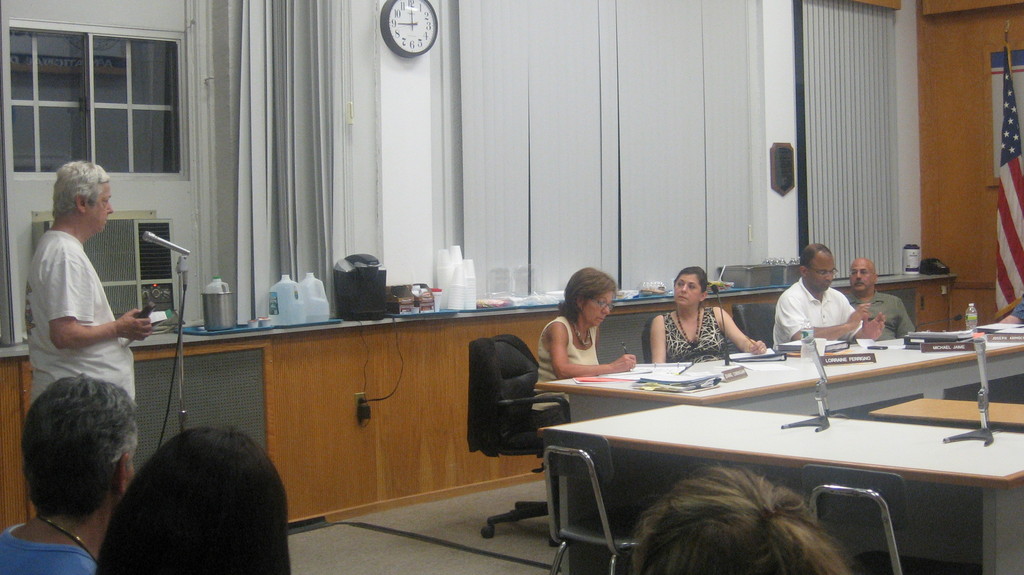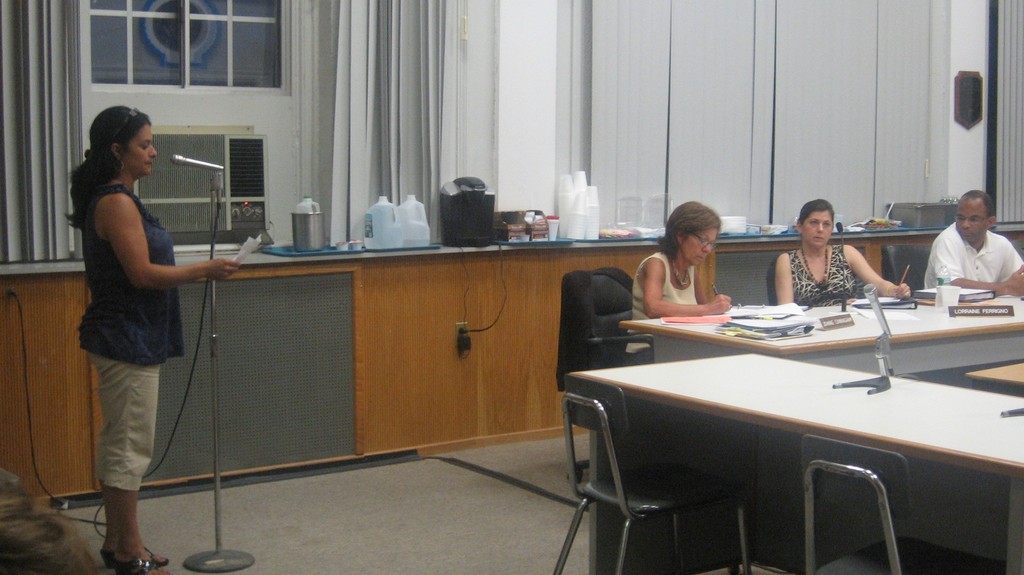Parents speak up for autism
Residents want expanded autism, ESL programs at Sewanhaka district
Seven years ago, Franklin Square resident Inga Krevatas helped create the first-ever autism program for the Franklin Square Union Free School District, which is currently housed at John Street School. Krevatas' twin daughters, Sophia and Alexa, were born with autism, and she wanted to ensure they received specialized teaching in their home district — not outside of it.
Now that the girls are 10, Krevatas wants to make sure they have a smooth transition into high school — something that isn't possible under the Sewanhaka Central High School District's current program, she said.
The Sewanhaka district, which is comprised of five schools, currently has one autistic program, the Promoting Academica through Life Skills program, which is housed at Elmont Memorial and Floral Park Memorial high schools. If the Krevatas twins were not autistic, however, they would be attending the H. Frank Carey High School, which is in their home district — something that Krevatas said she believes would be more beneficial to them.
"My kids have friends in the neighborhood," Krevatas said. "They don't have any business in Elmont. They really don't." She added that her older daughter, Olivia, 12, is already enrolled at Carey, and she believes that Sophia and Alexa would have an easier transition into high school, if their sister were near.
However, Dr. Victoria Tripodi, director of special education for the Sewanhaka district, said that children in the autism program who are separated from their home district, seem to adjust very well.
"There has never been an issue with any of the children," Tripodi said, explaining that she believes she would be able to identify children who weren't adjusting by academic changes, or other nonverbal cues, if they didn't verbally express a difficulty adjusting. The district's autism program was established nearly eight years ago, she added, and includes one speech therapist and one psychologist, who are shared between the two schools; as well as four teachers, eight teaching assistants and several aides.
When autistic children first come into the district, Tripodi said, they begin at Elmont Memorial, and then move on to Floral Park for vocational instruction. Students are able to stay in the autism program until age 21, she added.
Currently, Sewanhaka's autism program is comprised of 32 students.
"They've all adjusted to the change, to new friends," Tripodi said. "Some keep the same friends because they see them in the neighborhood, or at social events ... I have one family who has one child at New Hyde Park and one at Elmont, and it's worked. It's like sending two children to two different parochial schools."
Krevatas said, however, that another reason expanding the autism program is necessary, in her opinion, is due to the increasing number of autistic students in the community. The Franklin Square Union Free School District is currently comprised of more than 30 autistic students — many more than were in the district several years ago.
"Special education is not what is was 10 years ago," Krevatas said. "The statistics are scary." According to the Centers for Disease Control and Prevention, one in 110 children currently have an autism spectrum disorder; in 1980, one in 1,000 children were diagnosed autistic.
On July 12, at the Sewanhaka district Board of Education reorganization meeting, Krevatas spoke publicly to the board, discussing its one-school autistic program. Other district residents came up to the microphone, as well, including Pat Friedman and Cammi Spillane — a longtime proponent of a five-school English as a Second Language program, which the district currently houses only at Carey.
"(The autism program) has no business being in one school ... these kids should be in their home schools," Spillane said. "They need familiarity and they need constant. They should not be removed from their community because of autism ... that's where they're going to thrive the best."
The Sewanhaka district's ESL program includes nearly 200 students, and Spillane said she believes this has caused Carey to become overcrowded and unsafe. If the ESL program were spread out, Spillane added, she believes it would make way for the autistic program to be held at Carey, and the district's other schools.

 58.0°,
Partly Cloudy
58.0°,
Partly Cloudy 









